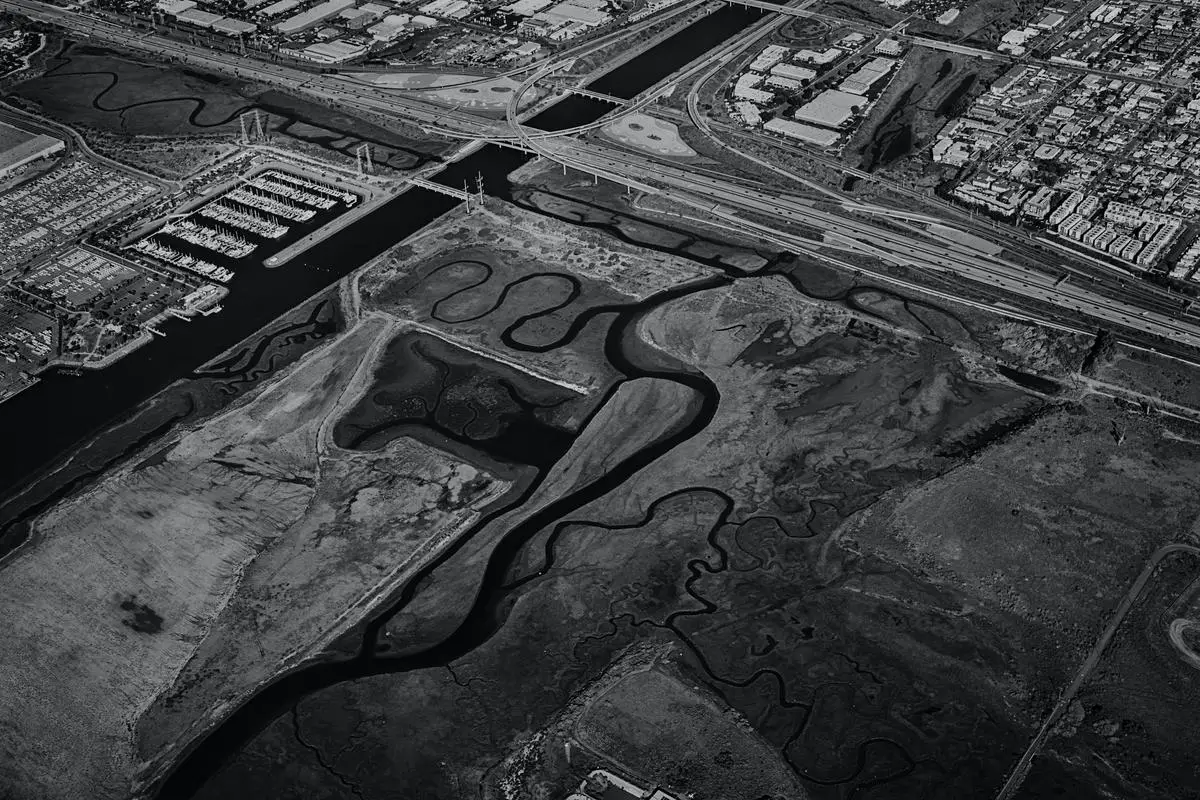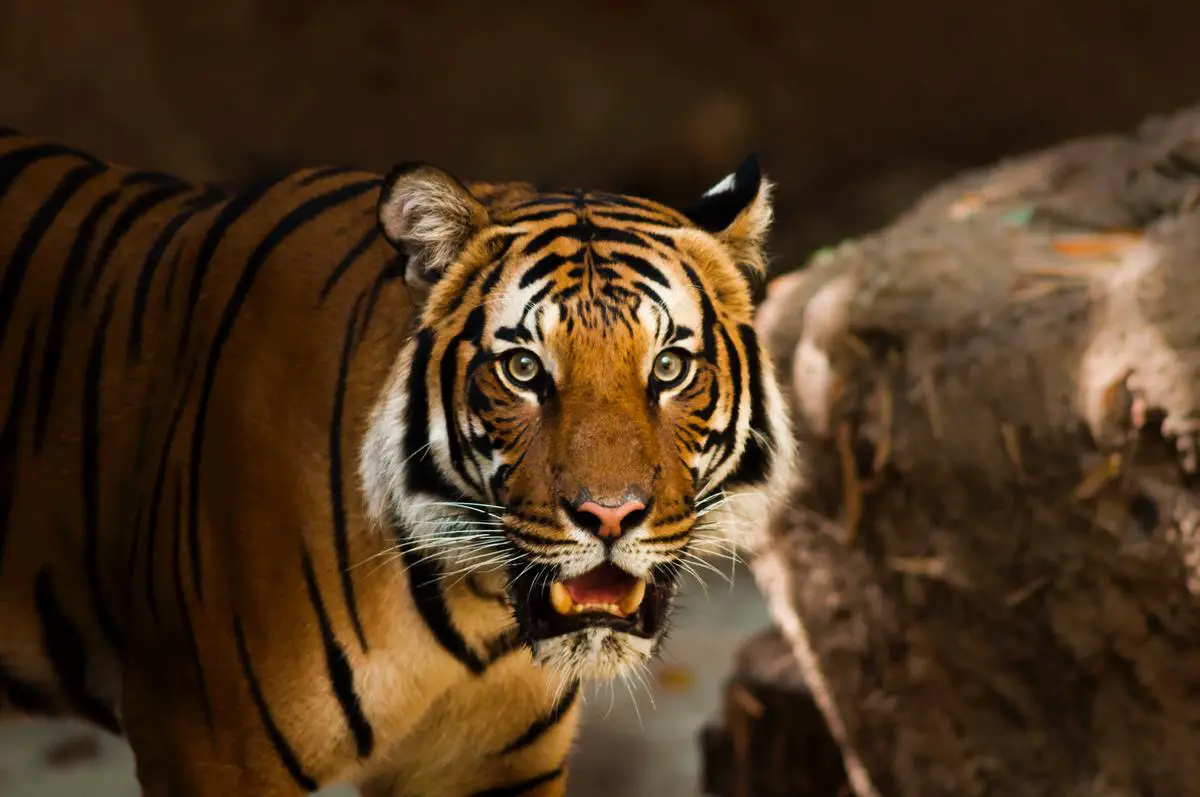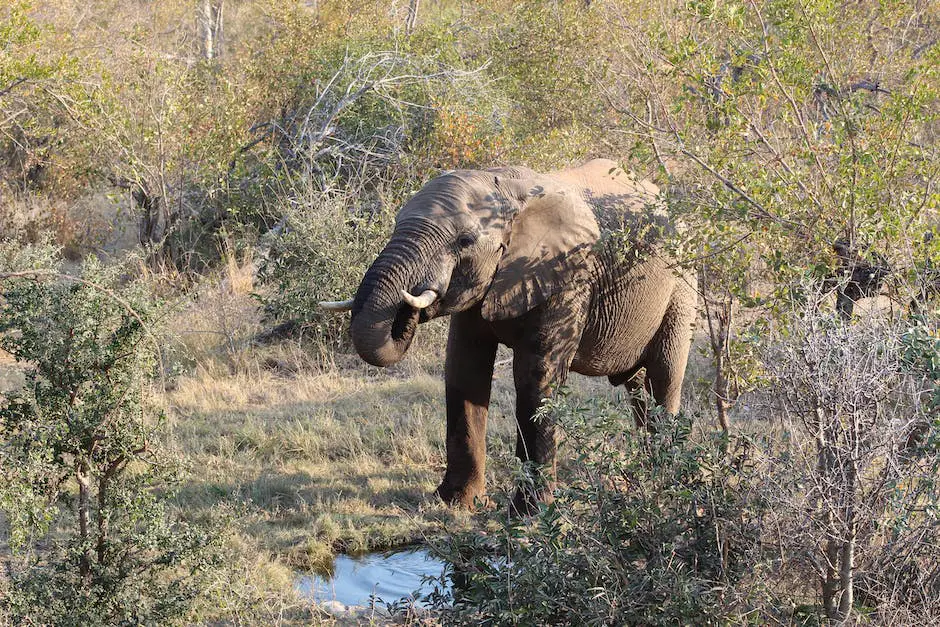Situated on the Pacific coast of Southern California, San Diego is a vibrant city teeming with life, blending urban charm with a rich natural landscape. Bursting with a myriad of ecosystems – coastal, desert, and mountain – San Diego hosts an impressive array of wildlife, each possessing unique characteristics contributing to the city’s biodiversity. This exploration delves into the emblematic species dotted throughout the city, boasting a remarkable variety and engaging in an intricate dance of existence. It sweeps across the dedicated wildlife reserves and parks, spotlighting their conservation efforts while also highlighting avenues for young adults to partake in the preservation of these natural wonders. Embarking on this journey unravels San Diego’s natural tapestry, illustrating an intertwining narrative of ecosystems, species, conservation, and public involvement.
Unique Ecosystems within San Diego
San Diego’s Diverse Biomes
San Diego, with its rich and diverse landscapes, is home to a plethora of ecosystems, each fostering a unique array of wildlife. From the temperate coastal regions, to the arid deserts, and the majestic mountains, San Diego offers a fascinating insight into the complex interplay of life, each ecosystem distinctly contributing to the city’s incredible biodiversity.
Coastal Ecosystems
San Diego’s coastline stretches a stunning 70 miles, blessed with sunlit beaches and rich tide pools, harboring a wide array of marine creatures. The coastal wetlands, some of the most productive systems in the world, house a multitude of organisms such as the protected California least tern and Light-Footed Ridgway’s Rail. The area also showcases varieties of crustaceans, fish, and mollusks that take advantage of the ever-changing water conditions.
Desert Ecosystems
San Diego’s desert ecosystems, found in places like the Anza-Borrego Desert State Park, are unique areas of striking beauty and surprising biodiversity. Despite the harsh and arid conditions, life thrives here in distinct and remarkable forms. The desert is home to species such as the roadrunner, a bird known for its swift movements on ground, and the Peninsular Bighorn Sheep, an endangered species. Plants such as the Barrel cactus and the Ghost Flower, each uniquely adapted to deal with the scant water resources, populate the landscape.
Mountain Ecosystems
The mountains are another remarkable ecosystem found within San Diego. They offer an environment home to diverse wildlife due to the varied topography and climate within a compressed region. These mountain ranges are teeming with wildlife like the California Quail, the state bird of California, Gray fox, and one of North America’s largest bird species, the Golden Eagle. Flora like pines, oaks and the notably rare Tecate cypress trees contribute to a robust signature of biodiversity.
Exploring Biodiversity in San Diego
From the majestic peaks of the Torrey Pines State Reserve to the ethereal beauty of the Anza-Borrego Desert, San Diego boasts a rich tapestry of ecosystems that sustain a wonderful array of flora and fauna. This intricate network of ecosystems plays an integral role in maintaining biodiversity and facilitating ecological balance. Therefore, understanding and appreciating the unique biomes of San Diego is fundamental. Not merely to marvel at their untamed beauty, but also to ensure their protection and sustained health for future generations.

Photo by blakeweyland on Unsplash
Noteworthy Species in San Diego
Bird Watching in San Diego: A Colourful Symphony of Species
The diversity witnessed in San Diego extends to its avian wonders. San Diego County is home to over 500 officially documented bird species, earning it the distinction of being the most bird-rich region in the United States.
The California Quail, recognised by its signature teardrop plume, reigns as the state’s official bird. These social beings are commonly seen in coveys, communing in the coastal scrub and chaparral environments where they forage for seeds and insects.
One cannot miss the Red-tailed Hawk which, with its rust-colored tail, puts on a spectacle as it soars high over open fields or sits perched atop fence posts or framework of lofty trees.
Secluded, yet enchanting, the endangered Light-footed Ridgway’s Rail inhabits the waterside. The loss of their coastal wetland habitat, however, makes sightings of this elusive marsh bird an infrequent event, adding to the significance of their existence within the county’s wildlife.
Scaly Sightings: Reptiles and Amphibians
Reptiles are an alluring part of San Diego’s wildlife. One such species, the San Diego gopher snake, often misunderstood due to its resemblance to rattlesnakes, is commonly found in scrublands, grasslands, and coastal dunes.
For those keen on meeting the California state reptile, San Diego is home to the desert tortoise. This iconic, long-living creature is found in the county’s arid regions, surviving by digging burrows to escape the intense heat.
The endangered arroyo toad, identifiable by its smooth greenish-gray skin and charming trill, was once common throughout Southern California. Today, habitat destruction, particularly damming of rivers, poses a substantial threat to this amphibian.
Furry Creatures: Mammals
San Diego’s diverse topography and climates allow an array of mammals to thrive. The California ground squirrel, a common sight in open, dry habitats, is known for its unique warning system to protect its colony from predators.
The agile bighorn sheep, a symbol of desert wilderness, is found in the rocky, mountainous terrain of the county’s desert region. This species, threatened due to habitat loss and disease, is known for its rams’ impressive, curled horns.
The San Diego pocket mouse, endemic to the region, exhibits nocturnal habits and a talent for seed foraging and storage. It thrives in flat, open areas with sandy soil.
Under the Sea: Marine fauna
San Diego’s coastline is teeming with marine life. Its most iconic resident, the California gray whale, passes along the San Diego coast during its 12,000-mile migration from Alaska to Baja California and back.
The leopard shark, common to La Jolla’s shallow coastal waters, is famous for its dramatic black markings. Each summer, hundreds of female leopard sharks gather in the warm waters to gestate their young—an unique natural spectacle.
The California sea lion, recognized by its dog-like bark and large, appealing eyes, is a conspicuous dweller on the rock formations off San Diego’s coast. These fantastic swimmers are known for their playful, social dynamics.
Conservation, The Key to Preserving Sustained Life
Strategically located, San Diego is a thriving hub for diverse wildlife, owed to continuous ecological efforts and protective measures in place across the region. Protecting natural habitats, conserving native species, and implementing initiatives such as habitat rejuvenation and breeding programs, especially for endangered species, are all crucial strategies. Collectively, these efforts help ensure the survival and resilience of San Diego’s rich natural ecosystem, safeguarding it for future generations. Success in these areas heavily relies on a harmonic blend of widespread public awareness, dedication, and proactive measures aiming at the preservation of the county’s rich biodiversity.

Designated Wildlife Reserves and Parks
Discovering the Wildlife Treasures of San Diego
When one thinks of San Diego, the mind naturally conjures images of splendid beaches bathed in never-ending sunlight. Yet, there’s another equally awe-inspiring facet of the region to explore – its wealth of wildlife reserves and parks. The area’s amazing biodiversity not only adds to its charm but also, thanks to wide-ranging conservation efforts, offers locals and visitors alike countless opportunities to experience firsthand the wondrous spectacle of the natural world found here.
San Diego Zoo
The San Diego Zoo, located in Balboa Park, is a global leader in animal care and conservation. The zoo houses more than 3,700 rare and endangered animals and is known for its commitment to preserving global biodiversity. With a wide variety of habitats ranging from rainforests to deserts, the San Diego Zoo’s mission is to “Save Wildlife Worldwide.” The zoo offers interactive experiences including Bus tours, Aerial trams, and animal encounters allowing close interaction with various wildlife at the zoo. The zoo also hosts numerous educational programs for visitors of all ages to imbue a love and respect for nature.
San Diego Zoo Safari Park
San Diego Zoo Safari Park, an expansive wildlife sanctuary operated by the San Diego Zoo, is home to more than 2,600 animals across 300 species, many of which roam freely in vast enclosures. The park’s main aim, similar to the zoo, is to conserve rare and endangered species. Visitors get to encounter giraffes, rhinos, cheetahs, lions, elephants, and more on various safaris that emulate a genuine African Safari. The park’s unique experiences like Caravan Safaris, Jungle Ropes Safari, and Flightline Safari provide adventure-filled, once-in-a-lifetime opportunities for visitors.
Birch Aquarium
Birch Aquarium at Scripps Institution of Oceanography, University of California San Diego acts as a public exploration center for the world-renowned Scripps Institution of Oceanography. The aquarium provides mesmerizing exhibits featuring coral reefs, kelp forests, and interactive tide pools. With a strong commitment to strengthening environmental awareness and ocean conservation efforts, it offers unique educational experiences for its visitors to explore ocean science and engage with marine life.
Cabrillo National Monument
The Cabrillo National Monument, located on the Point Loma Peninsula, is a significant wildlife conservation area overlooking the San Diego Bay. Known for its tide pools, hiking trails, and stunning panoramic views, the park is also a critical habitat space for native flora and fauna. Visitors can catch glimpses of gray whales off the coast during the winter and early spring. The old Point Loma Lighthouse is an attraction of historical significance, adding to the unique allure of the park.
Torrey Pines State Natural Reserve
The Torrey Pines State Natural Reserve, sitting on the cliffs above Torrey Pines State Beach, is home to the nation’s rarest pine tree – the Torrey Pine. The natural reserve is designed to protect not only the trees but also one of Southern California’s last salt marshes and waterfowl refuges. Along with the inherent beauty of the pines, visitors can also explore the reserve’s rich diversity of wildlife. Hiking trails in the park offer magnificent views of the Pacific Ocean.
Preservation Efforts
San Diego serves as a sanctuary for many unique ecosystems, actively preserving its biodiversity through several parks and reserves. These entities are tasked with the vital role of conserving wildlife, implementing rehabilitation programs, and promoting public awareness. They contribute immensely to the ongoing prosperity of numerous species by taking actions such as protecting endangered species, restoring habitats, and enlightening the public on the importance of wildlife conservation measures. These efforts position them at the forefront of sustainable eco-tourism worldwide, presenting a model blueprint for other cities to follow.

Getting Involved in San Diego Wildlife Conservation
Exploring Wildlife in San Diego
San Diego’s diverse ecosystems are home to an array of unique and enchanting wildlife species. From the stunning beaches that serve as habitats for seal colonies to national parks abundant with a variety of flora and fauna, San Diego offers bountiful opportunities for wildlife exploration. Specifically targeting young adults, it facilitates active participation in wildlife conservation activities, thereby nurturing an appreciation and understanding of the importance of preserving our natural world.
Exploring San Diego’s Wildlife Reserves
San Diego is abundantly populated with wildlife reserves such as the Torrey Pines State Reserve, Cabrillo National Monument, and San Diego National Wildlife Refuge, each with its unique ecosystem and inhabitant species. These reserves always welcome passionate volunteers to help in their conservation efforts.
Volunteers can engage in a myriad of activities, from basic maintenance and cleanup tasks to monitoring and collecting data on the habits and health of wildlife species. It’s a hands-on way to learn about the area’s rich biodiversity while lending a helping hand to conservation efforts.
Joining the San Diego Zoo Global Wildlife Conservancy
The San Diego Zoo Global Wildlife Conservancy offers a great platform for young adults interested in engaging in wildlife conservation. They host various programs, including internships and volunteering slots, enabling participants to work closely with wildlife and contribute directly to conserving endangered species.
Through this initiative, you get exclusive opportunities to observe and learn about various endangered species like giant pandas, Tasmanian devils, African elephants, and more – while contributing towards their conservation.
Participating in City-Organized Initiatives
The city of San Diego often arranges initiatives aimed at promoting and conserving the area’s local wildlife. Such events include beach clean-ups, birds and marine life survey, environmental education workshops, and more.
Young adults can actively participate in these programs, gaining practical knowledge about the city’s precious wildlife, their habitats, and the many threats they face. Moreover, these city-organized efforts often provide networking opportunities, connecting like-minded individuals passionate about preserving San Diego’s wildlife.
Volunteering in Rehabilitation Centers
In San Diego, several wildlife rehabilitation centers provide medical and rehabilitative care for injured, abandoned, or orphaned wildlife. These centers, such as Project Wildlife and The Fund for Animals Wildlife Center, heavily rely on volunteers to help nurse animals back to health.
This type of involvement provides a unique opportunity for young adults to witness wildlife conservation up-close. Volunteering in such facilities will help you develop essential skills in wildlife care and gain deep insights into the challenges that wildlife faces due to human activities.
In conclusion, San Diego offers a myriad of opportunities for young adults to dive into wildlife conservation. By volunteering and actively getting involved, you can gain a moderate understanding in San Diego wildlife exploration while contributing towards protecting our planet’s beautiful and diverse wildlife.

San Diego’s natural beauty is undeniably intertwined with its city ethos, proving to be much more than just an urban jungle or a tourist magnet. The city’s ecosystems, its intriguing wildlife, and the priceless green spaces are as much a part of its identity as are its skyscrapers and bustling city streets. The dedicated wildlife reserves and parks not only provide a glimpse into this symbiotic urban-natural relationship but also actively contribute to its strengthening. With avenues for involvement in wildlife conservation open to young adults, everyone has an opportunity to contribute to the protection and preservation of this biodiversity. Ultimately, diving deeper into the understanding of San Diego’s wildlife and participating in conservation efforts isn’t just about preserving nature; it’s about preserving a part of San Diego’s unique identity.

